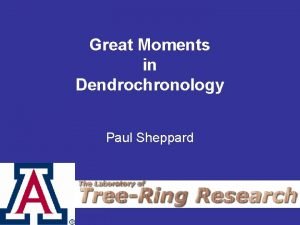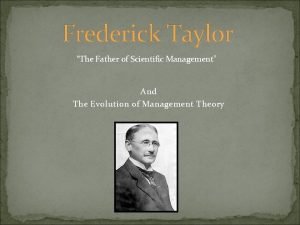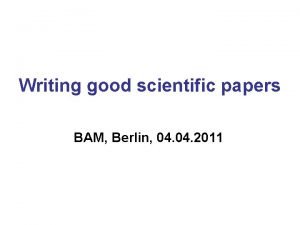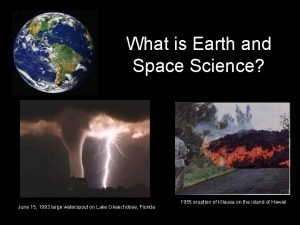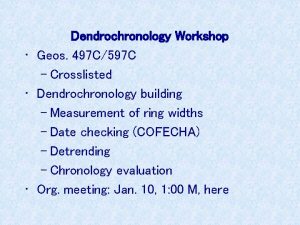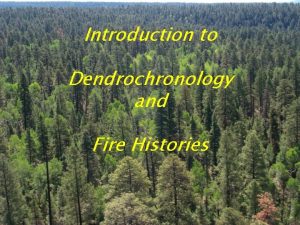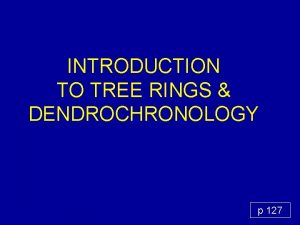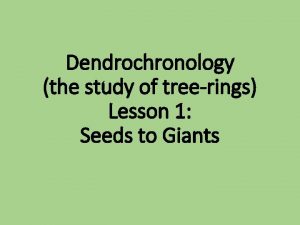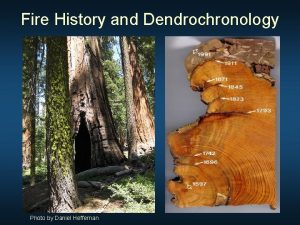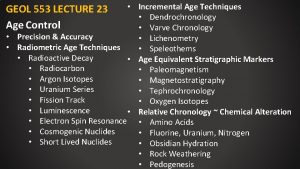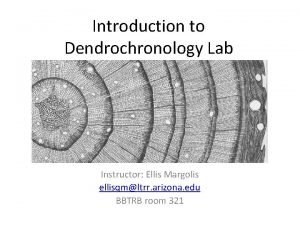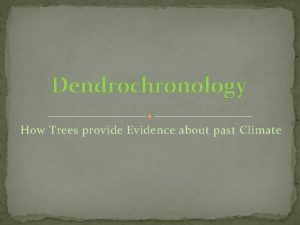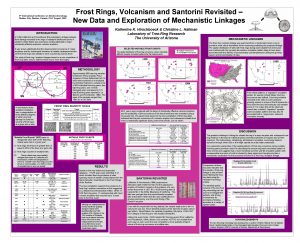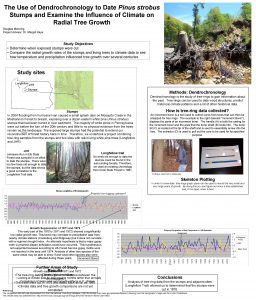PRINCIPLES OF DENDROCHRONOLOGY Set of principles or scientific




















- Slides: 20

PRINCIPLES OF DENDROCHRONOLOGY • Set of principles or “scientific rules” • Some are specific to dendrochronology – Tree selection • Others are basic to many disciplines – Replication

Crossdating • Matching of ring patterns across trees – Widths, density, other features • Allows year date of formation to be assigned to each ring • Critical to dendrochronology

Limiting Factors • Liebig’s Law of the Minimum – Rate of a process is limited by most limiting factor – Interactions between nutrients – Other factors: water?

Limiting Factors • Tree Growth – Cannot proceed faster than is allowed by most limiting factor – Degree and duration of a limiting factor change from year to year ring variation – Could be different limiting factors relative to various frequencies of growth

Limiting Factors • Sheep Mt bcp: moisture/temperature limited at high-frequency • Decadal ramp evidence of CO 2 limitation?

Aggregate Tree Growth • Ring variation is a function of – Age or size – Climate – Endogenous disturbances – Exogenous disturbances – Leftover

Aggregate Tree Growth • To focus on one of these factors, others must be accounted for – To study past climate: – Sample trees without past disturbance – Remove age effect

Aggregate Tree Growth • Age or size effects removed by detrending

Site and Tree Selection • Select a site to maximize effect of an environmental factor on tree growth • Eliminate or equalize other factors • Isolate the single factor of interest • Edaphic variation can be below surface

Site and Tree Selection • Not random sampling in true ecological sense • Ramifications for inference – Instead of saying: Climate affects tree growth in such a way … – We might say: Past climate at this site has been such and such …

Replication • Multiple radii to estimate tree growth • Multiple trees to crossdate, estimate site patterns • Multiple sites to estimate regional tendencies • Multiple samples to establish building sequences

Ecological Amplitude • Tree growth more sensitive to environmental factors at edge of species range • Altitudinal: – Pine sensitive to moisture at lower elevational limit

Ecological Amplitude • Latitudinal: – Trees may occupy wide variety of microsites in center of range, not limited by single factor – Trees may occupy narrow variety of microsites along margins of range

Ecological Amplitude • White oak is classic – Enormous range – Gentle topography – Itrdbfor: “In the East … tree sensitivity to climate increases from the range center out toward the range edge. ”

Ecological Amplitude • Might affect age of trees: – Schulman, Ferguson 1956 (Science 1954, v. 119, pg. 396, 883) – “Young” bcp in east – Old bcp to west – Corresponds to average rainfall totals

Ecological Amplitude • Currey 1964: – Found oldest bcp on Wheeler Peak, NV – “The simple hypothesis of Schulman and Ferguson is … no longer tenable. ”

Uniformitarianism • Physical and biological processes that link current environmental processes with current patterns of tree growth operated similarly in the past • “Present is key to past” (Hutton 1785)

Uniformitarianism • Tree rings from the 1900 s calibrated with rainfall records from 1900 s – Annual precipitation • Past rings indicate past precipitation

Uniformitarianism • Have current environmental conditions existed in past? • Do past environmental conditions exist currently? • Young trees vs. old trees? – Szeicz and Mac. Donald 1994: Agedependent tree-ring growth responses of subarctic white spruce to climate. CJFR 24: 120 -132.

Uniformitarianism • Paleo twist: Past is key to future – This is why we do what why do
 Dendrochronology
Dendrochronology Total set awareness set consideration set
Total set awareness set consideration set Training set validation set test set
Training set validation set test set Information gathered during an experiment
Information gathered during an experiment How is a scientific law different from a scientific theory?
How is a scientific law different from a scientific theory? Bounded set vs centered set
Bounded set vs centered set Crisp set vs fuzzy set
Crisp set vs fuzzy set Crisp set vs fuzzy set
Crisp set vs fuzzy set Crisp set vs fuzzy set
Crisp set vs fuzzy set What is the overlap of data set 1 and data set 2?
What is the overlap of data set 1 and data set 2? The function from set a to set b is
The function from set a to set b is Frederick taylor is the father of
Frederick taylor is the father of Principles of scientific communication
Principles of scientific communication Principles of ethics
Principles of ethics Set of moral principles
Set of moral principles Instruction set principles
Instruction set principles Scientific writing berlin
Scientific writing berlin Scientific term for work
Scientific term for work 150 000 scientific notation
150 000 scientific notation Psychological perspective
Psychological perspective Space definition science
Space definition science
